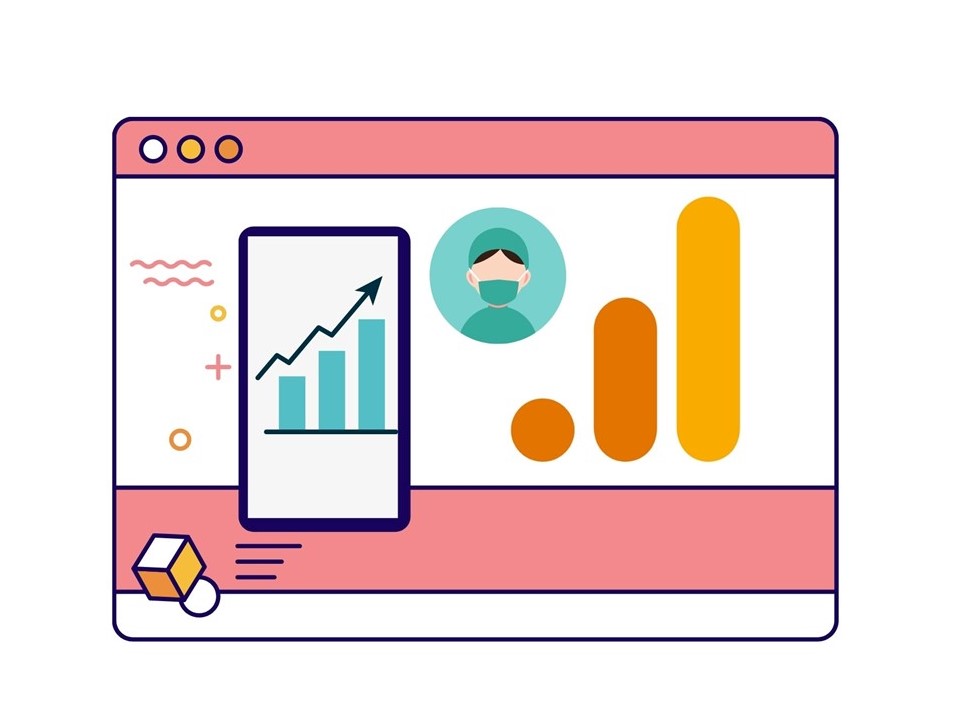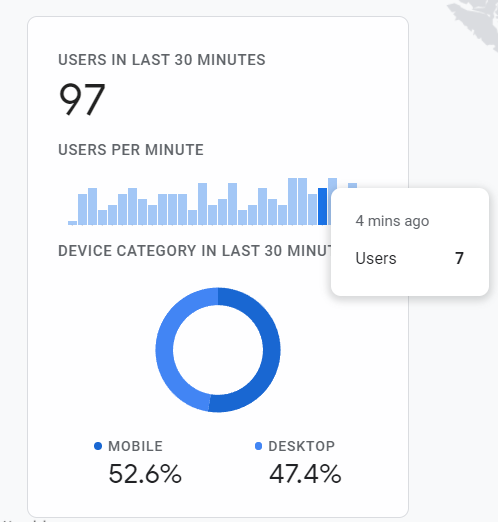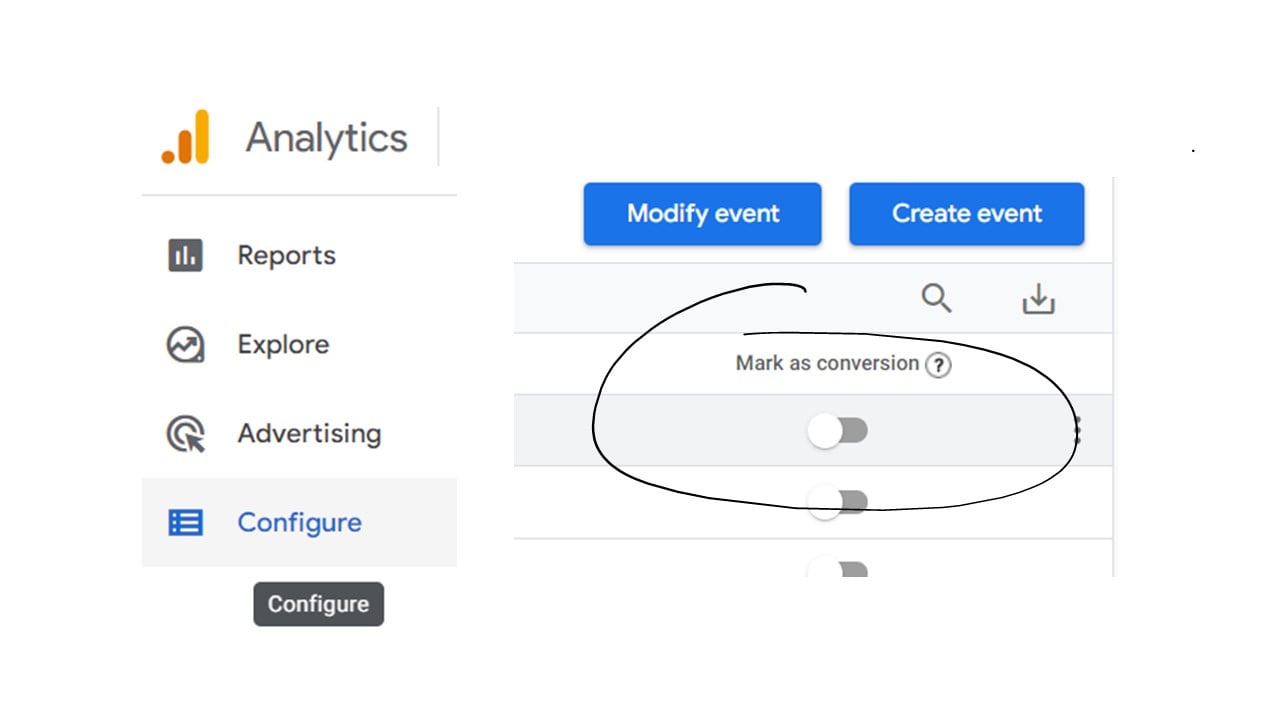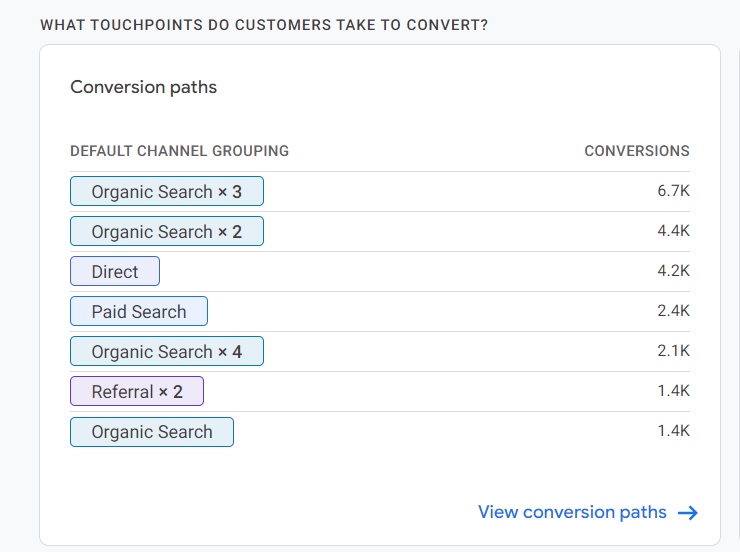GA4: The Advanced Analytics Healthcare Websites Need
Ready to boost your SEO ?

GA4: The Advanced Analytics Healthcare Websites Need
More than 50% of people search online for information about health concerns or care providers, and 77% of patients use a search engine before booking an appointment with a local healthcare provider. As more people turn to the internet for healthcare services information, you may find yourself inundated with tons of data about your website visitors, but are unable to use this information to increase business. Current Google Analytics reports can be confusing and don’t immediately show why visitors did (or didn’t) convert.
Google Analytics 4, also known as GA4, is the newest way to acquire better insights on how visitors behave when interacting with your healthcare website. The more insight you gain, the better you can optimize your website to improve traffic and conversions.
Let’s look at why GA4 advanced analytics for healthcare websites can help improve your marketing efforts.
What’s So Great About GA4?
Data collection and privacy has changed since Google rolled out GA Universal. Most importantly, GA Universal relied on cookies to track visitor behavior, whereas GA4 uses machine learning instead. GA4 Analytics is ideal for healthcare websites because it’s designed to give a more comprehensive view of the patient’s journey.
With Google Analytics Universal, the reports show different types of “hits” that occur on a website during one session, which is the time period a visitor interacts with your website. One session can contain many interactions, but reporting on those interactions often means exporting multiple reports and sifting through data in order to see meaningful patterns.
GA4 treats these interactions as separate events, allowing you to dig deeper into what your visitor actually did during the interaction with much greater detail.
One of the most important features of GA4 is its “out of the box” event tracking. With GA Universal, you have to set up goals and events one by one. GA4 automatically collects data on valuable interactions such as scrolling, clicks, video engagement, and more. Healthcare websites often have multiple conversion points. GA4 allows you to see the paths visitors take to get to a conversion so you can improve it.
The other advantage of GA4 is that you are now able to view user interaction across both desktop and mobile devices. We know general healthcare information gathering can often occur on desktop, while local searches happen mostly on mobile. GA4 allows you to see that user’s activity across both devices (rather than as separate data points).

GA4 Reporting
When you log into your GA4 property, the first report you will see is the Reports Snapshot. This report shows you an overview of such metrics as the number of visitors and their engagement. It also shows where your visitors are coming from, and which pages are the most visited.
GA4 has a built-in automated insights report that shows you trends in traffic or engagement that you should be aware of, such as a sudden drop in visitors, or if there was a spike in traffic from a particular source.
For example one of our healthcare clients saw a spike in user engagement and page views for the previous week.
Rather than having to run multiple reports on page views and sources, GA4 captures this information automatically to highlight data fluctuations as soon as you log in.

GA Universal records real time data, which shows users currently on the site. GA4’s real time data aggregates data from the last 30 minutes instead. This allows you to view more data at once, scan the graph to view visits over this time period, and see the device type (mobile or desktop) as well.

Which GA4 Events Are Tracked
When someone visits your healthcare website, what do you want them to do? What pages or interactions are most important to your organization?
You may be familiar with goals in GA Universal, as these are often set up to record such conversions as form fills. While this type of information is certainly important, you could be missing out on how the visitor got there, and what steps could be improved to increase the conversion rate for other visitors.
GA4 automatically tracks what are the most important engagement metrics for websites, such as page views, page scrolls, and clicks. The more engaged visitors are, the more likely they are to convert. By analyzing these events, you can see where visitors drop off, and what you need to improve.
We have one healthcare client who wanted several specific website interactions to be tracked as events, and to count these as actual conversions. This included such actions as fact sheet downloads, newsletter sign ups, donation submissions, and their contact form.
Once these events were created we went to the left navigation pane in GA4, clicked the Configure icon, and marked the event as a conversion.

From the Events screen you can click on an event and then drill further down to see how the event has been performing. For video views, for example, our healthcare client saw an uptick in activity for this event in the past 28 days.
To understand what happened, the client clicked on the video view event and was able to select the source filter to determine where the spike came from.
Setting up the default events is simple: no code changes are needed. Simply enable the options in Google Analytics and you can select which ones to mark as conversion or not.
Default GA4 Events Definitions
These are the events that are automatically triggered in GA4 and the data each one captures.
- Page_view = view of a page (tracks each time the page loads or the browser history state is changed by the active site)
- User_engagment = tracks event count per user (tracks periodically with GA in the background)
- Session_start = when a user engages with the app for more than the minimum session duration (>10 seconds) after a period of inactivity that exceeds the session timeout duration (tracks on any engagement with site)
- First_visit = first time a user visits a website (Tracks first time a new user visits) Scroll = when a user scrolls (tracks the first time a user reaches the bottom of a page (i.e., when a 90% vertical depth becomes visible)
- Click = when users click a link to an external page (tracks each time a user clicks a link that leads away from the current domain).
With so much data to sort, GA4 offers helpful visuals to make it easier to determine what is working on your healthcare website and what isn’t. One report our healthcare clients find useful is the Advertising Snapshot. It offers a visual card that shows multi-channel conversion paths. This report can shed light, for instance, on how effective paid campaigns are compared to social, email, or content marketing.

Starting in 2022, GA4 will be the default property for Google Analytics. If you already have GA Universal, you should also implement GA4 for your healthcare website to get the most out of your data and fine-tune your marketing campaigns.
with a Booster program for Healthcare companies.
